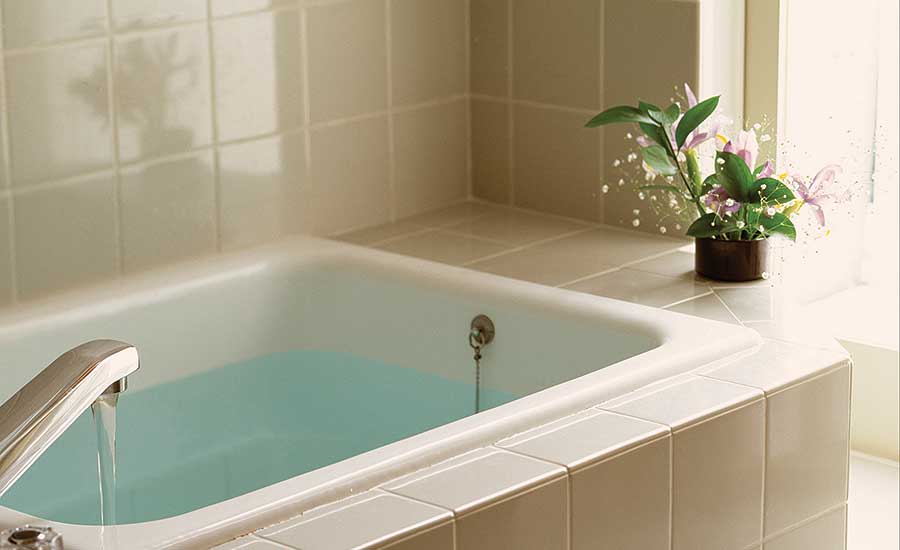The International Association of Plumbing and Mechanical Officials (IAPMO) recently published the monograph of proposed changes to the WE-Stand, which is short for Water Efficiency and Sanitation Standard. The document was previously identified as the Green Supplement.
In many ways, WE-Stand competes with the International Green Construction Code, which is promulgated by ASHRAE, International Code Council (ICC) and U.S. Green Building Council (USGBC). If you compare the two documents relating to green plumbing, you will find the WE-Stand to be much more detailed and much more complete. ASHRAE, ICC and USGBC need to catch up to the level of the IAPMO standard.
WE-Stand has a number of subcommittees called task groups that review green requirements in great detail. This allows important subject matters to have change requirements developed after analyzing all the technical information. Many proposed changes were submitted by the various task groups.
The next meeting of the IAPMO WE-Stand Technical Committee (TC) was scheduled for April 9 and 10, in Ontario, California. During this meeting, the TC was scheduled review all the changes that have been submitted and published in the monograph. There are 68 changes proposed to the WE-Stand.
One change that has raised the eyebrows of many in our profession is, “What constitutes gray (grey) water?” Interestingly, IAPMO uses graywater while ASHRAE, ICC and USGBC use greywater. I’m not going to get into the discussion of the proper spelling of the word. When I Googled the two words, the response was, “Gray is the more popular spelling in the U.S., while grey reigns supreme in the U.K.”
WE-Stand currently defines graywater as, “Untreated wastewater that has not come into contact with toilet waste, kitchen sink waste, dishwasher waste or similarly contaminated sources. Graywater includes wastewater from bathtubs, showers, lavatories, clothes washers and laundry tubs. Also known as grey water, graywater and greywater.”
The definition closely aligns with what most in the plumbing profession consider to be graywater. Surprisingly, the International Green Construction Code has no definition of graywater or any guidelines as to what constitutes graywater. However, in defense of ICC, the International Plumbing Code does include a definition of graywater, which reads, “Waste discharged from lavatories, bathtubs, showers, clothes washers and laundry trays.” The definition is similar to the WE-Stand definition.
The questionable exclusion from graywater in the WE-Stand and IPC definitions is kitchen sink waste, which also includes dishwasher waste. Some are of the belief that kitchen sink waste should be classified as graywater.
The very first WE-Stand change scheduled to be considered will propose to strike the exclusion of kitchen sink waste and dishwasher waste from the definition. The result would be to allow kitchen sink waste and dishwasher waste to be classified as graywater.
The justification supporting the change in the definition of graywater was less than stellar. It claims 15 states already permit kitchen sinks to be included with graywater. This was followed by a statement that kitchen waste does not contaminate the water similar to feces from a toilet (water closet).
This change prompted me to look inside many of the books on my bookshelf. Every book I opened explained the high organic loading from kitchen waste and dishwasher waste. The ASPE Plumbing Engineering Design Handbook had a good write-up on graywater, which excluded kitchen waste.
This change should generate some interesting discussion. It will get everyone excited with the very first change.
Cold-start faucets
Another change that appears controversial will be a mandate that all single-lever residential kitchen faucets and all single-lever lavatory faucets must be cold-start faucets. This was another change whereby I had to Google “cold-start faucet.” It appears the concept has European origins. The faucet must open with cold water, not mixed or hot water. The user must manually move the handle to the hot position to get mixed temperature or hot water.
The change would eliminate a lot of faucets currently used in green buildings. I conducted a quick check of the big U.S. faucet manufacturers, and I could not find any promoting their faucets as cold-start faucets. Searching further, I found three European manufacturers that distribute in the U.S. with cold-start faucets.
The cold-start faucet manufacturers’ literature explained the concept of a cold start is to prevent the water heater from activating when using a faucet for many normal functions. Identified as normal functions were brushing teeth, washing hands and getting a glass of drinking water.
If the concept is accepted, there should be a change added to the faucet standard, ASME A112.18.1/CSA B125.1, to regulate cold-start faucets. Normally, changes are first made to a product standard, followed with a proposal to the installation code or standard. However, there have been times where the installation requirements dictate to the standard.
Two fascinating changes put forth by the Alternative Water Source Task Group address on-site black-water treatment systems and on-site storm-water treatment systems. Both changes are very extensive and detailed with their requirements.
Water reuse from black-water treatment systems is a tough subject to tackle. There have been many applications throughout the world of on-site black-water treatment, but minimal use in the U.S. Rather than identifying the means of treating black water, the proposed change has performance requirements for the resulting treated water in order to be reused.
While there has been a lot of work and requirements for rainwater, storm water has been largely ignored. However, there are problems with possible contaminants being present in storm water. Furthermore, in many parts of the country, storm water provides a good source of an alternative water.
Under the graywater requirements, there is a change proposed regarding the estimated amounts of graywater available in a building. The new proposed values are based on the 2016 Residential End Use of Water Study (REUS). If you have not yet read the executive summary of this report, it is worth your time to review. You can download it here, tinyurl.com/y5noor9y.
The WE-Stand monograph can be downloaded from the IAPMO website at tinyurl.com/y2rdqt97.
The results of the proposed changes will be published in a Report on Proposals (ROP) at the end of July.



